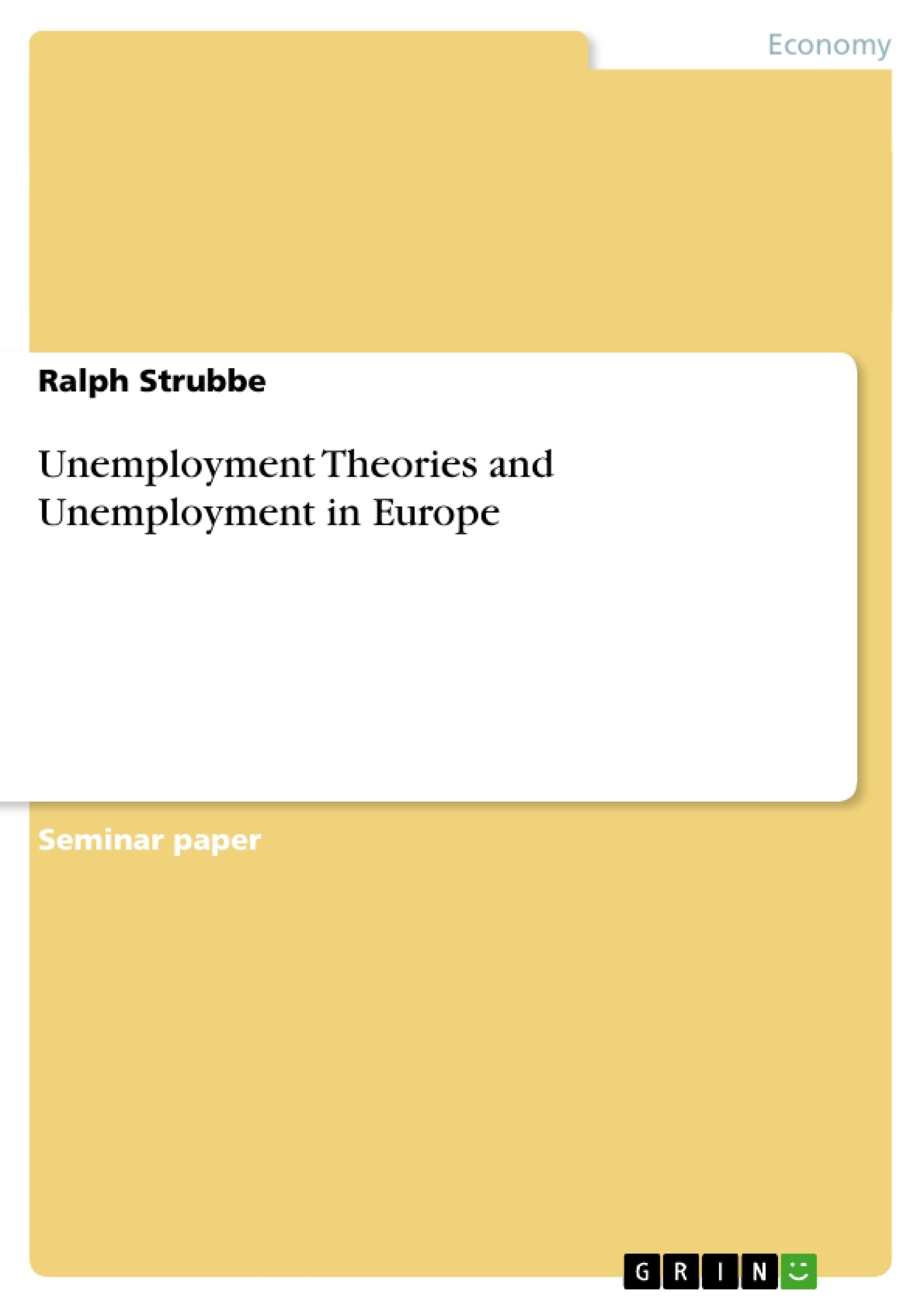Considering the ILO reporting 6.00% unemployment rate for the world in 2012 (ILO Report 2013), it is obvious that unemployment is a commonly observed phenomenon. Chart 1 displays the devel-opment of the unemployment rate for 20 OECD countries2 from 1955 until 2011. The average of all these countries in 2011 was 7.67%; of the EU 15 alone was 8.41%.
In order to explain why unemployment occurs, the first part of this essay will deal with the different general theories of unemployment. Following this, the specific issue of European unemployment will be treated in the second part. This essay will conclude then with the author´s estimation which theory explains European unemployment best.
Introduction
Considering the ILO[1] reporting 6.00% unemployment rate for the world in 2012 (ILO Report 2013), it is obvious that unemployment is a commonly observed phenomenon. Chart 1 displays the development of the unemployment rate for 20 OECD countries[2] from 1955 until 2011. The average of all these countries in 2011 was 7.67%; of the EU 15 alone was 8.41%.
In order to explain why unemployment occurs, the first part of this essay will deal with the different general theories of unemployment. Following this, the specific issue of European unemployment will be treated in the second part. This essay will conclude then with the author´s estimation which theory explains European unemployment best.
Unemployment theories
Classifications of theories as New Classical or Keynesian will be avoided as the understanding of these terms can be easily biased.
Basically it is sensible to distinguish between two main situations for unemployment; unemployment in an economy which produces below its possible output level and in an economy which produces at possible output level (Chrystal & Lipsey 2007). Unemployment in the first situation can be called disequilibrium unemployment; in the latter equilibrium unemployment (Garratt and Sloman 2010). This distinction relates to the model of the natural rate of unemployment, which implicates that, the supply of and the demand for labour meets at the equilibrium; thus, balance out (frequently called Not accelerating-inflation rate of unemployment (NAIRU)) (Griffiths and Wall 2007).
Accepting the Residual unemployment (people, who basically cannot be employed due to various reasons), the equilibrium unemployment can be subdivided into Frictional, Seasonal and Structural unemployment (Grant and Stanlake 2000). Frictional unemployment arises when employees change from one employment to another. In this sense it is inevitable, however the duration of unemployment is among others conditioned by the quality of information about new jobs and the determination of people to search for new jobs as well as the institutional structure (Garratt and Sloman 2010; Grant and Stanlake 2000; Griffiths and Wall 2007). Seasonal unemployment occurs when the demand for labour fluctuates within a year (Garratt and Sloman 2010; Grant and Stanlake 2000). Structural unemployment emerges where the pattern of demand alters due to radical changes of the industry´s structure. If this shift is spatial it is called Regional unemployment, whereas the subspecies Technological unemployment describes the situation when new manufacturing processes decrease the intensity of labour. Thus, the structurally unemployed possess skills that do not match the altered requirements of the industry (Garratt and Sloman 2010; Grant and Stanlake 2000; Griffiths and Wall 2007).
illustration not visible in this excerpt
Chart 1 : unemployment rates in OECD countries (own illustration based on data from Layard et al. 2005 as well as ILO Statistics and database 2013)
[...]
[1] ILO (International Labour Organization)
[2] EU 15 countries, Switzerland, Norway, USA, Canada and Japan
- Citation du texte
- Ralph Strubbe (Auteur), 2013, Unemployment Theories and Unemployment in Europe, Munich, GRIN Verlag, https://www.grin.com/document/215308
-

-

-

-
Téléchargez vos propres textes! Gagnez de l'argent et un iPhone X. -

-
Téléchargez vos propres textes! Gagnez de l'argent et un iPhone X. -

-
Téléchargez vos propres textes! Gagnez de l'argent et un iPhone X. -

-
Téléchargez vos propres textes! Gagnez de l'argent et un iPhone X. -

-
Téléchargez vos propres textes! Gagnez de l'argent et un iPhone X.

